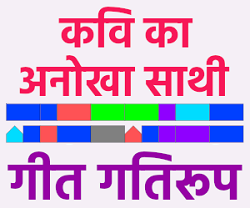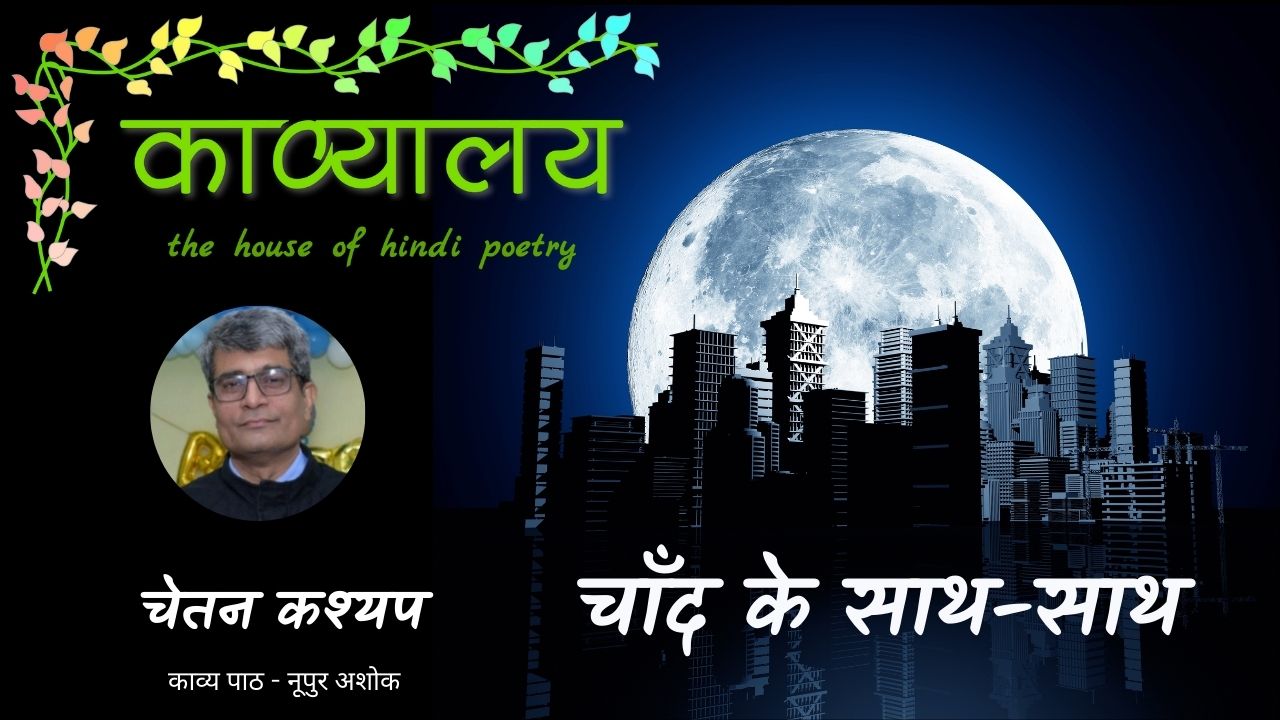Basic Structure of Hindi Poetry
Part 2 - Maatraa in Metered (Chhandobaddh) Poems
Vinod Tewary and Vani Murarka
(Editors, Kaavyaalaya.org)
Email address: [email protected]
Preface
This flexibility of 1 or 2 maatraas for the swar ए and ओ based on pronunciation exists more in Avadhee (अवधी) and Urdu (उर्दू). Examples are given below demonstrating this. However, in proper Khadee Bolee (खड़ी बोली) and its pronunciation, both ए and ओ consume 2 maatraas each. This is clearly followed in the poetry of the stalwarts of Khadee Bolee Hindi poetry in such as Dinkar, Bachchan, Subhadra Kumari Chauhaan etc. Nowadays due to the influence of Urdu and the movies the use of 1 maatraa for ए and ओ is found even in Khadee Bolee Hindi poetry. For Khadee Bolee, this is somewhat of a compromise. In Urdu, this is perfectly valid.
Rules of maatraa in poetry follow exactly the same pattern as the rhythm in music. The maatraa in poetry has the same meaning as the maatraa in tablaa. This gives some liberty in the maatraa count. In music, one can elongate a swar or combine two swars into one either by merging the two swars or dragging a swar into another one - the so called ghaseet in Indian music (a rather unromantic word). In music, you would often see a singer pronouncing a long 'आ' or 'ई' as short 'अ' or 'इ'. This reduces the maatraa from 2 to 1. It is managed in music through tabla. In poetry, it is a compromise. In music one can also have half maatraa (for reducing the maatraa count to maintain the rhythm) which is not recommended in poetry though it is not uncommon.

Note that each line has a total of 16 maatraas and match with each other. The more important thing is the distribution of maatraas which is identical in both the lines. The maatraas of individual words do not have to match. Just the series has to match. If a maatraa 2 occurs in the upper line, the maatraas at the corresponding position in the lower line are either 2 or 1+1. As explained in the previous para, 2 matches with 1+1 or 2 and vice versa. In fact the maatraa structure of the entire line does not have to be exactly identical in the middle of the line. The most important thing is they need to match at the beginning and the end of the line that are the ascent and the descent of the line. The maatraa distribution of each line and the periodicity defines the laya of the poem. In the language of tabla, the 'sum' सम occurs at the each line. Those who are familiar with teen taal, will imemediately identify this structure with teen taal - the most common taal in which Raamcharitmaanas is sung. Dohaas are 24maatraa. Consider an example of a doha in Raamcharitmaanas:

Note that the maatraa of ले in ‘बोले’ in the first line is 2 whereas the maatraa of ते in तेहि is 1. This is apparent from their pronunciation. The letter ‘le’ in ‘bole’ is pronounced elongated whereas ‘te’ in ‘tehi’ is pronounced in short. In the first line consider what happens if you replace ‘मूढ़’ with ‘मूर्ख’. It does not violate the maatraa structure or the meaning. Note, that half ‘r’ in moorkh does not contribute any maatraa because its pronunciation is telescoped in ‘moo’. In general, the following logic determines when a half letter will consume 1 maatraa and when it will consume no maatraa:
One way to verify these cases and similar queries that might arise regarding half letters is to say the word without the half letter and observe whether it impacts the time duration. Saying आमा (instead of आत्मा) does impact the time and a clear unit of time is missing. Saying दीघ (instead of दीर्घ) does not impact the time indicating that र् in दीर्घ is not consuming a maatraa.
 The extra letter अ at the end of nirantar is a kind of lahra that elongates the last letter ‘र’. You can also pronounce it as ‘निरन्तरः’ or ‘निरन्तरा’ to get the same effect. Finally, in this context, notice that the total maatraa of a line of doha is 24 in contrast to 16 of a chaupaayee. The series of maatraa is also different. A doha in general ends with a single maatraa and would end as 2+1 or 1+1+1. This gives the characteristic change of meter between a doha and a chaupaayee. This is true for any doha, as for example, written by Rahim. रहिमन वे नर मर चुके, जे कहुं मांगन जाहिं उनते पहिले वे मुये, जिन मुख निकसत नाहिं. As a self-exercise, you may like to out the maatraa structure of this doha and verify that it has the same structure as the two dohas quoted above. Pick up some other dohas and do the same exercise. Now consider the maatraa structure of Jhansi Kee Rani. Consider the same piece as quoted in Part 1:
 Note that the total maatraas are 30 and the series matches at the beginning and the end of each line. Even though सुनी and वाली do not align, it does not hamper the rhythm because it is in the middle of the lines. Now consider this antara
 Again note how the total maatraas =30 and the series of maatraas match. In counting the maatraas, note that kri (कृ) in the first line is one maatraa and gya (ज्ञ) is counted as 1+1 because of their pronunciations in the respective words. If a word starts with ज्ञ, in general it would be one maatraa because it is a composite of half ग and full य with half ग telescoped into य. The main thing to note is that the total number of maatraas of the lines in sthaayee, sahyogee, and the antaraa match. This ensures the rhythm of the poem. You can verify it for other lines in the antara. 4. Example- Urdu ghazal Now let us also consider a Urdu ghazal. The definition and the structure of the ghazal will be discussed in Part 4. For the present purpose of maatraa count, only the basic features of a ghazal are given. Urdu ghazal has special rules. It consists of couplets (sher शेर). In the first couplet called matlaa, both lines must rhyme and have exactly the same maatraa structure (same total as well as same order). In the subsequent couplets, the second line must rhyme with both the lines of the matlaa and must have the same maatraa structure as both the lines of the matlaa. The first line of each subsequent couplet should not rhyme with the matlaa but that is not a strict rule. The maatraa structure of the first lines of each sher must be the same as each other and, in general, match with matlaa. The last couplet should have the poet's name though some poets (very few, notably Sahir) have not followed this tradition. In fact Sahir did not write ghazals anyway (very few, mainly in movies). Now let us see the above rules illustrated with a familiar ghazal from Shakeel. This ghazal has been beautifully sung by Beghum Akhtar. The maatraa count of this ghazal is given below:
(Ayaan means to expose) This is matlaa. Notice both the lines rhyme as 'jaaye'. The number of maatraas in each line is 17. The maatraa structure is same- if there is 2 in the top line, the bottom line at that place is either 2 or 1+1. Notice that ए in बेज़ुबानी is counted as 2, whereas in राज़े it is counted as 1 because it has a long pronunciation in bezubaanee and a short pronounciation in raaze. In general in composite possessive nouns in urdu, ए has a short pronunciation and has 1 maatraa (For example - गमे-दिल). Here is another couplet in the same ghazal.

Notice that the number of maatraa in each line is 17 and each line has the same maatraa structure as the matlaa. The first line does not rhyme with the matla but the second line rhymes with jaaye. Next: Software for Maatraa Counting | |||||||||||||||||||||||||||||||||||||||||||||||||||||||||||||||||||||||||||||||||||||||||||||||||||||||||||||
| 8th May 2013 |








